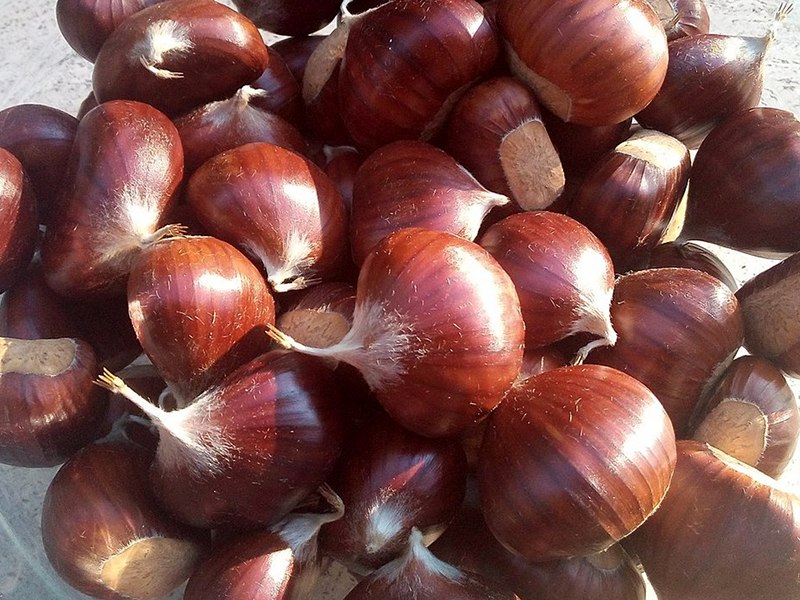Chestnut
In the past centuries, the chestnut has been without a doubt the essential product guaranteeing the subsistence of the poor people living in Appennino Modenese. At least until the second post-war period, when chestnut flour began to be replaced with wheat and corn flour. Unavoidably, this passage led to the gradual abandonment of the most adequate species for the production of flour, the abandonment of the mills and the stone-built dry houses, called metati. Only the cultivation and harvesting of chestnuts used for fresh consumption have survived. Since the 1980s, the protected areas in the surroundings of Modena have implemented measures to enhance and promote the chestnut production, which led to the reconstruction of the history of this ancient fruit and its traditions. Particularly suitable for the climate of Appennino Modenese, the chestnut is an arboreal and fruit-bearing plant belonging to Cupuliferae. It adapts to sandy and clayey soils with a southern or western exposure. Its cultivation has a centuries-old history and has always been practiced by grafting the wild plant, ideal for the timber but not for the fruits, small and not very good. Its leaves were used in the past to feed the cattle and, above all, as litter. There are several chestnut varieties. Marrone, with big-size and tasty fruits, is ideal to make roasted chestnuts and to prepare marron glacé. Among its varieties, in Appennino Modenese it is possible to harvest marrone of Pavullo in October (characterized by a bright reddish color and deep streaks), and marrone of Zocca (characterized by a reddish color with dark streaks and an elliptical shape). Pastone or Pastenesa is very sweet and easy to preserve: the fruits are small, dark, and hairy. It is used to prepare balot or ballotte (boiled chestnuts) and is ideal to produce flour. Carpinese or Carrarese variety produces a reddish and large fruit with a smooth hull: a very sweet flour which can be preserved for a long time is obtained from this variety.
Further varieties are: Rossola, Castellesa, Sborgà, Garfagnina, Bianchina, Tosca, Zarucca.








